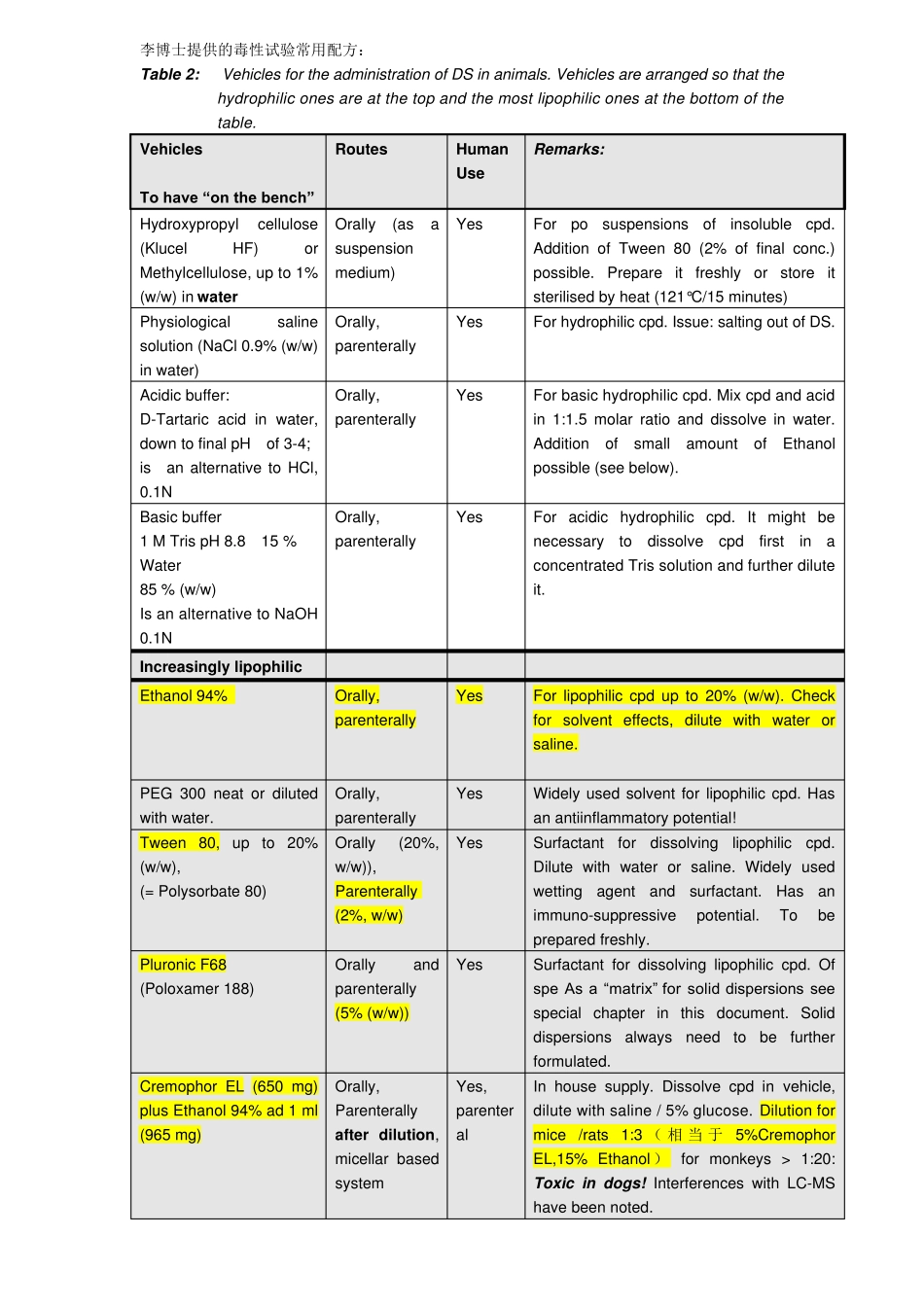李博士提供的毒性试验常用配方: Table 2: Vehicles for the administration of DS in animals. Vehicles are arranged so that the hy drophilic ones are at the top and the most lipophilic ones at the bottom of the table. Vehicles To have “on the bench” Routes Human Use Remarks : Hydroxypropyl cellulose (Klucel HF) or Methylcellulose, up to 1% (w/w) in water Orally (as a suspension medium) Yes For po suspensions of insoluble cpd. Addition of Tween 80 (2% of final conc.) possible. Prepare it freshly or store it sterilised by heat (121°C/15 minutes) Physiological saline solution (NaCl 0.9% (w/w) in water) Orally, parenterally Yes For hydrophilic cpd. Issue: salting out of DS. Acidic buffer: D-Tartaric acid in water, down to final pH of 3-4; is an alternative to HCl, 0.1N Orally, parenterally Yes For basic hydrophilic cpd. Mix cpd and acid in 1:1.5 molar ratio and dissolve in water. Addition of small amount of Ethanol possible (see below). Basic buffer 1 M Tris pH 8.8 15 % Water 85 % (w/w) Is an alternative to NaOH 0.1N Orally, parenterally Yes For acidic hydrophilic cpd. It might be necessary to dissolve cpd first in a concentrated Tris solution and further dilute it. Increasingly lipophilic Ethanol 94% Orally, parenterally Yes For lipophilic cpd up to 20% (w/w). Check for solvent effects, dilute with water or saline. PEG 300 neat or diluted with water. Orally, parenterally Yes Widely used solvent for lipophilic cpd. Has an antiinflammatory potential! Tween 80, up to 20% (w/w), (= Polysorbate 80) Orally (20%, w/w)), Parenterally (2%, w/w) Yes Surfactant for dissolving lipophilic cpd. Dilute with water or saline. Widely used wetting agent and surfactant. Has an immuno-suppressive potential. To be ...


